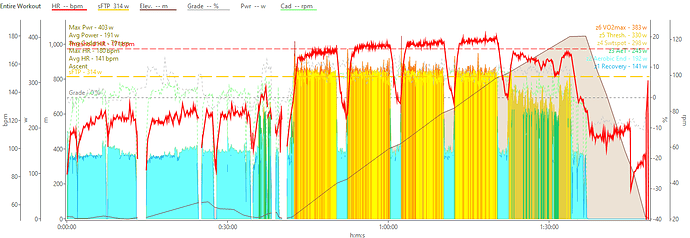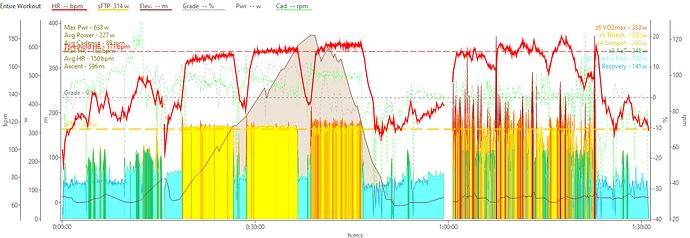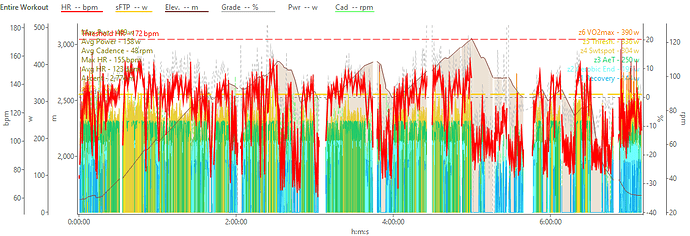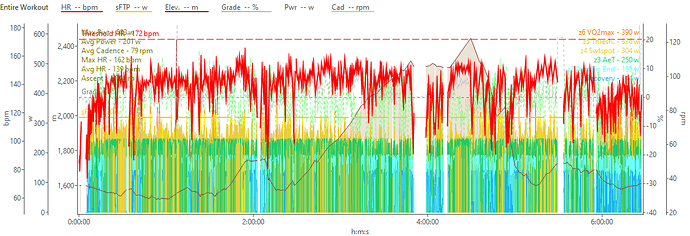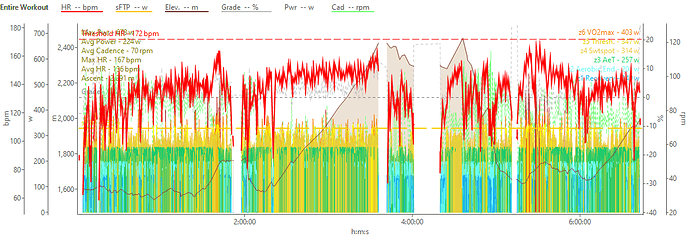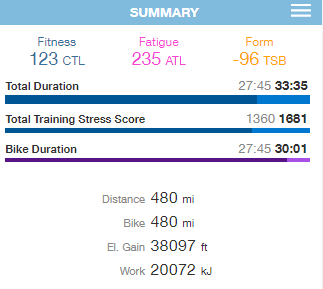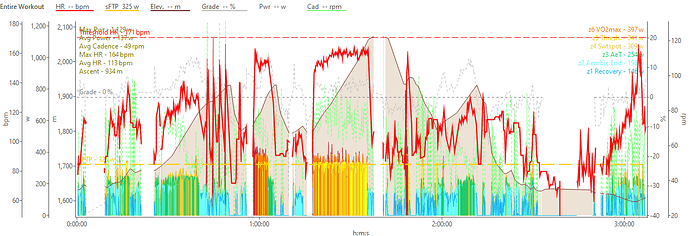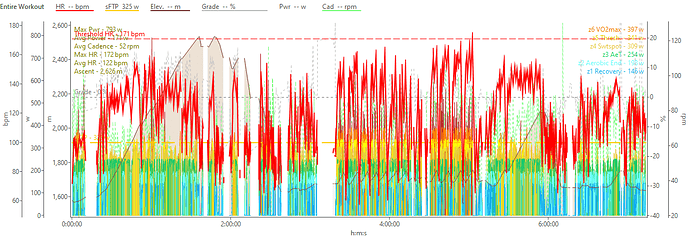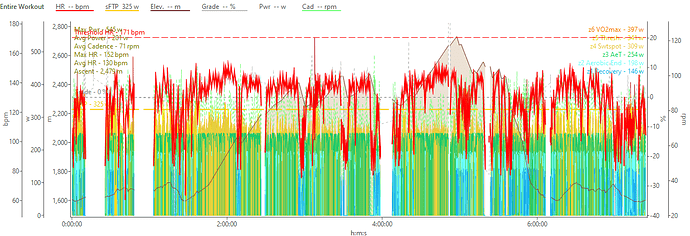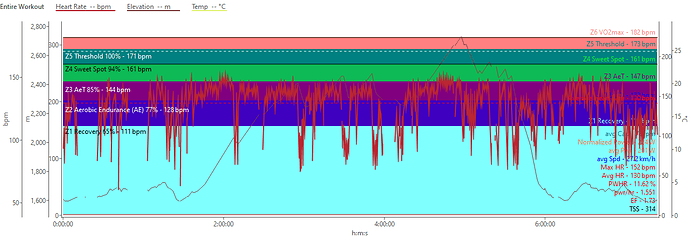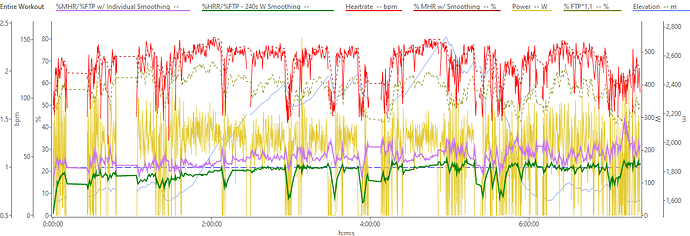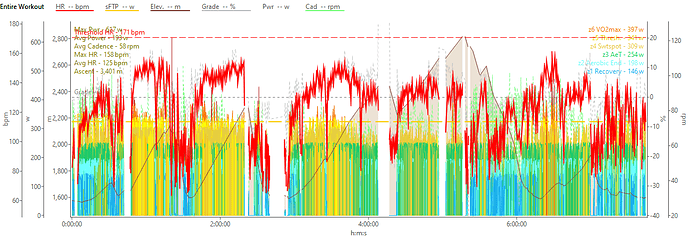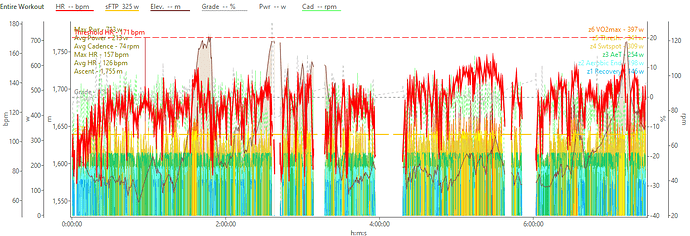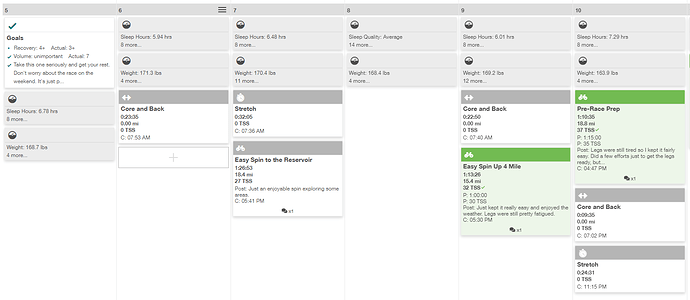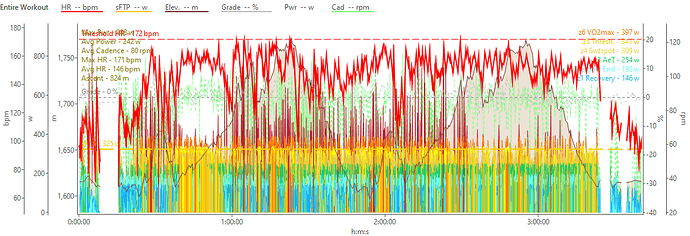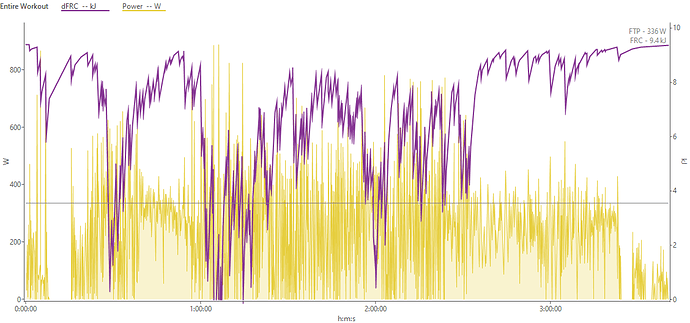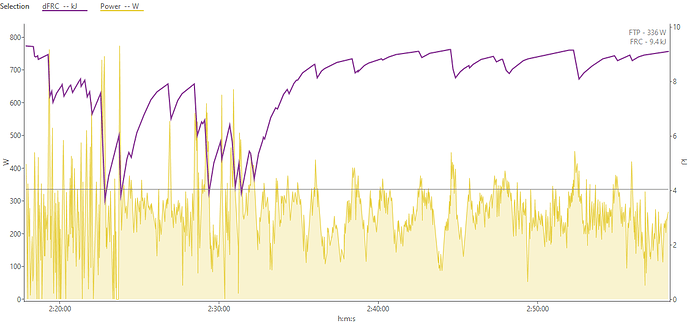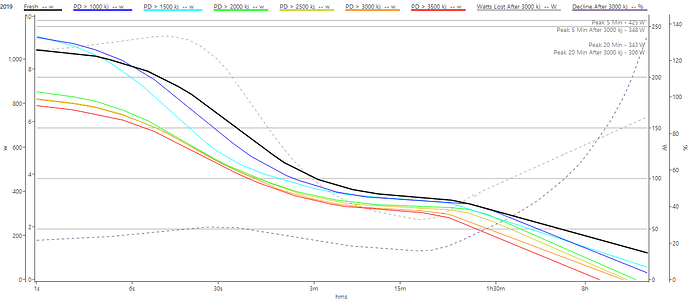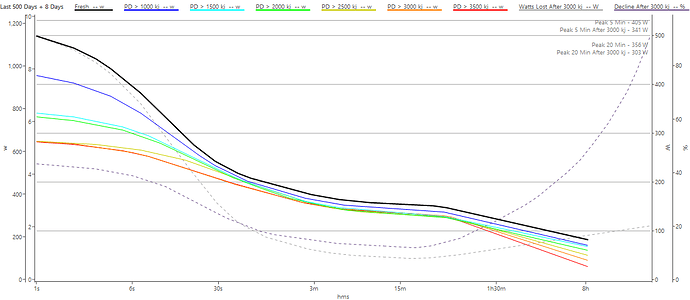Getting Back to Racing
As I mentioned before, I don’t consider a camp done with the last day of training. The recovery week afterwards is just as much a part of the camp and I don’t consider it done until the legs are back.
A strange little indicator I get - I put on a lot of water weight during camps (as much as 10 lbs.) I know I’m close to being recovered when that weight comes back down and it finally dropped by Saturday after my camp.
With only three hours of very easy riding between the end of my camp on Sunday and the the following Sunday, I felt pretty good about my rest and I was looking forward to seeing what sort of bump I got.
That said, I finished my recovery week with not the best choice… a race. in fact, my first race since 2019. I knew it wasn’t a great choice, but a friend really wanted to go to the event and I was his only opportunity for a lift. What can I say… I’m a nice guy and if I’m going to drive several hours to a race, I’m going to race.
I’ve raced on recovery weeks before. It’s not a pleasant experience. In fact, I’ve had a couple races where I didn’t last 10 minutes. If the body went into recovery mode during the recovery week, there are no painkillers flowing. So, the legs hurt and feel really flat. Basically the anti-thesis of what you want on race day.
I went to the race in that mode. I also have done no race fitness work. I also haven’t raced in a year-and-a-half. Hopes were not high. My ambition was to try to get an hour in the pack getting comfortable with riding in a pack again.
The course was a relatively flat course with a bunch of 30 second to 1 minute climbs. It was in the desert with strong winds. Not the best course for a guy like me.
There were about 50 to 70 riders in the field and as I feared, the pack felt very unfamiliar and uncomfortable. I had my work cut out if I’m going to have my pack skills back by August for Joe Martin. I found myself slipping to the left side of the field before I forced myself to ride in the middle. Ugh… why’s everyone so close to me? Did that guy just bump me? What am I doing here?! All the thoughts I didn’t want to have…
We hit the first kicker climb. Ouch! Any effort over threshold just ached. Not a single painkiller flowing in my legs. Good to know…
I needed a confidence boost to change my mindset. There was a breakaway up the road and the field was starting to chase. Good! I moved forward and got into the rotation. No better way to build confidence than to do something.
We caught the breakaway but kept rotating. I took a long pull and then moved left. No one came through. I looked back. I had 10 seconds on the field. Well… damn. I thought about it for a minute and decided “why not?” No big power in my legs so I locked in around 300 watts and went for it. Didn’t expect to last more than five minutes.
So why is the field getting small? And why isn’t the motorbike ahead of me? I don’t know where I’m going. Oh well… I put my head down. Ten minutes… 15 minutes… come on guys, you’re supposed to chase me! Then a solo rider passed me. I knew what that meant. I looked back and the field was coming like a bullet. I slipped back into the field. Glad I did something!
Then the race got crazy… roller after roller, cross-winds and constant attacks. This is getting fun. I jumped into some moves but the aching legs were limiting me. Finally a big move went up the road. That was the move and I knew it!
A friend, Drew Christopher, jumped to bridge across and I got on his wheel. We closed about 2/3ds of the gap. That hurt! Then we both cracked. “Lousy legs today” I commented. “Tell me about it” he said. We both slunk back to the field watching the winning move go up the road. Oh well.
The next hour was a semi-organized chase but not enough to bring them back. I was happy to see a lot of riders had already been popped. At least I wasn’t the first which felt like a miracle with my recovery-week legs. But as we came around to the rollers and cross-wind again, I knew I was in trouble. The few matches I started the race with were already burned.
We hit the first hard roller and I was out the back with two other riders. But painfully still close. I put in a surge to try to close the 10 seconds, but only managed to drop my companions. Great. Eighteen miles of cross-winds to go and I’m solo. I put my head down and chased holding the field painfully close, but not close enough to bridge.
Riders started falling off the back and I either caught them or passed them. I eventually found myself with Drew’s teammate George and we worked together to get to the finish. We weren’t catching anyone but we weren’t letting anyone catch us either.
Not a result to write home about (I finished 26th,) but considering my expectations, I’ll call it a good start to the season.
Here’s my heatmap for the race:
All pretty reasonable power. The biggest sustained effort was the breakaway towards the beginning.
What I’m more encouraged by was my heart rate:
Almost entirely in the sweet spot range and only just touching threshold a few times. That tells me the race was well within my limits. My issue was the complete inability to put in short aggressive efforts. Some of that was due to my training (no race work yet,) but probably more due to my recovery week legs.
More interesting is this graph which shows my decline in FRC (similar to W’). Theoretically when it hits zero, I’ve lost all ability to go above threshold power:
My breakaway didn’t dip into that capacity, but the attempts to get into the attacks and bridge to the winning move did make a big dent. dFRC hit zero around 1:10:00 which was when Drew and I tried to bridge. Confirmation that I didn’t have the legs for that move (and need to work on that.) Races always come down to just a few critical moments and I didn’t rise to the occasion in this critical moment.
Just as interesting was the point where I got popped (right at the 2:30:00 mark.) Here’s a zoom in:
I definitely dipped into that capacity but I didn’t deplete it. Not even close. Confirmation of what I felt later - my race stamina isn’t great right now, but my getting popped was more mental than physical. Another good thing to be aware of and work on through this spring.
Thanks for reading!
Trevor
